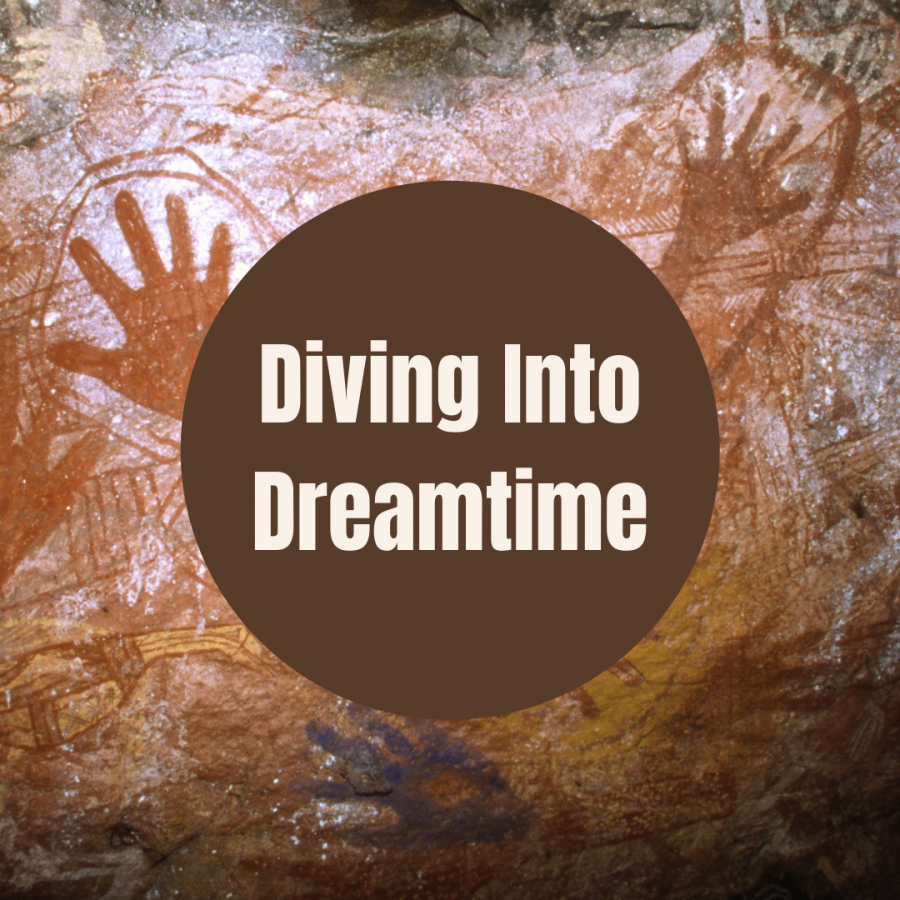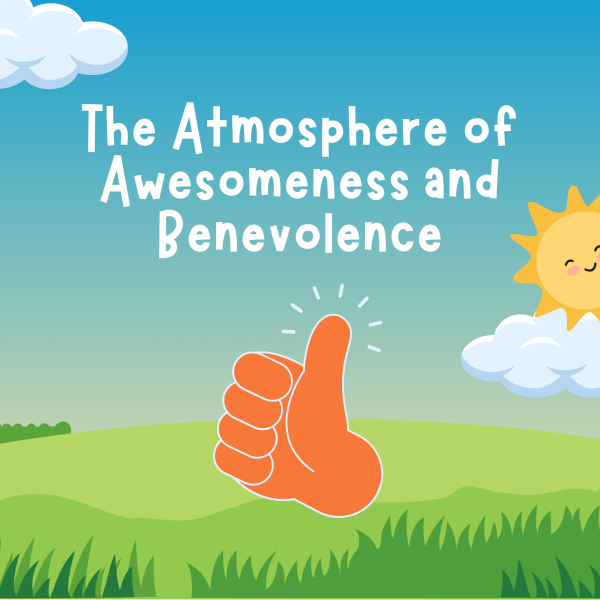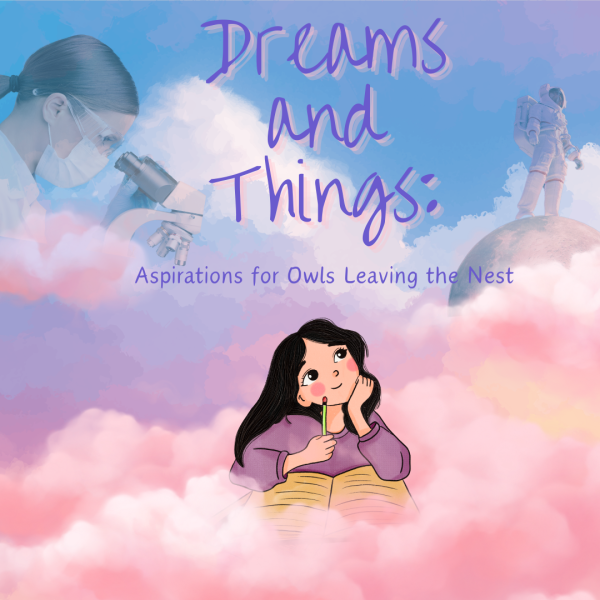DIVING INTO DREAMTIME
A closer look at two popular Dreamtime Myths and what iUP students can learn from them
Myths Matter
Myths are stories of the past and for Australia, Dreamtime myths have been told over many, many years and are an important part of Australian culture. They are stories that teach lessons, give you insight into the world, and through them, you can learn about the wonders of a culture that is still very much alive.
Today, we want to share two important stories with valuable lessons that may be old but still just as crucial.
Tiddalick
In this story, Tiddalick the frog is very thirsty and because of that, he ends up drinking all the freshwater in the billabong. The other animals can’t get a drink because of his greedy act and they come to the conclusion that they need to get the water back. They make a plan to get Tiddalick to laugh so he’ll spit up all the water again.
All the animals, one by one, work hard to make Tiddalick laugh but the only one successful is a snake who ties itself into a knot, unable to untie itself again. Tiddalick finally started laughing so hard that all the water came rushing out again and the animals could drink from it.
Think Before You Drink
Tiddalick the frog may seem like a simple story about water, humorous acts, and the shenanigans of animals, but if we venture past the surface, then we can see what it is truly trying to convey.
Tiddalick is greedy and drinks all the water in the pond without thinking about other people and though we can easily accuse him of being a terrible person, there are many times we make the same mistake. In a world of emails, virtual live lessons, and school being done at home, it’s easy not to think much about being kind behind a screen. Things can be misinterpreted, lies can be told, and most of all, we can be oblivious to people’s feelings.
If Tiddalick could’ve been more thoughtful of his actions and less selfish, it would have avoided the situation he was in. So in your daily life and your online life, always be thoughtful of others and your actions toward them. If someone is talking through the mic in live lessons then don’t interrupt them. If your siblings want a cookie then make sure to save one for them. Over all else, be kind and never fail to be thoughtful.
Just a single thought could stop you from doing something costly.
Gulaga
This next story is about Gulaga, the sacred mountain, and her two sons Najanuga and Barranguba. As the story goes, Gulaga had two sons, Barranguba and Najanuga. Barranguba, now known as Montague Island, is the older son. Older children can often get tired of their families, even way back in this time and so after a while, Barranguba asks his Mother if he could venture into the sea to observe this outside world filled with fish, sharks, whales, and other Australian marine life.
As Barranguba left, his little brother watched left behind and he asked his Mum, “Can I go out too? I’m big and grown-up! Can I go watch the fish, sharks, and whales? The sacred mountain spoke back, ‘No, small son. You are still far too little. If you go out there, you’d get quickly swallowed up by Gadu, the sea. I’ll keep you near the foot of me. This way, I can watch you while you watch your brother out in the ocean.’
Listening to his mother’s cautious words while thinking more about his previous request, the younger son remained at her foot. We now know that little mountain as “mummy’s little boy”, because he has always remained with his mum. (Note that Mum is the Australian spelling and term for Mother.)
Voice of Gulaga
While the short and sweet Dreamtime myth known as Gulaga may be limited in words, it is not limited in lessons. Though it is open to interpretation, several clear messages from this story can still be applied to our everyday lives in this modern world. Reading the myth, you learn of an older, wiser, sibling venturing off into the world who leaves behind an eager, yet much younger sibling. This younger sibling is anxious to follow after and even as he asks his mother to consider what he wants to do, he is ready to leave her behind. However, to the young mountain’s dismay, the mother mountain is quick to shut down his high hopes. Accepting his mother’s ruling, the younger brother makes revisions to his plans to now remain with her.
With this in mind, let’s take a second to imagine how differently the course of the story could have been. With the younger mountain being as ecstatic as he was about the outside world, he could have easily denied his mother’s request. Along with this, the mother mountain could’ve simply just allowed him to follow in his brother’s footsteps so quickly. If the younger sibling had achieved this, imagine everything that would’ve been able to take place in this other version of his life. Because of how small, young, and inexperienced he is, the ocean presents many obstacles that could result in him being in a dangerous situation. The consequences of not thinking before you act can surely be dire and deadly, just as life would have possibly been for the younger sibling in the story.
In a virtual world, like we are in this modern age, it can be so simple to gloss over the thinking stage in our actions. Texting, social media, and technology, in general, can disconnect us from the possible consequences of our actions. It’s more important than ever that we remind ourselves that like how toothpaste cannot be put back in its tube, once something is sent, it’s out there in the digital world forever. Don’t be hasty like the younger sibling was, and listen to that voice inside your head that urges you to do otherwise.
That voice is your Gulaga, and it’s wiser than you might think.
Merging the Myths: What do they have in common?
Dreamtime is the popular mythology of the native Australians, the many myths that there are, their purpose is clear. Dreamtime stories are used to easily teach generations of all ages about all the origins, lessons, and even dangers of the world. These tales have been passed down from generation to generation, and many can be shown to date back to 65,000 years ago. These myths make up the culture of Native Australians and are known across the continent. However, iUPrep isn’t located in the wonderful Land Down Under, so why is this relevant to us? Simply put, the lessons in these myths are universal, and these two can be directly applied to our everyday lives as virtual students.
“Think before you act,” is a piece of advice that we’ve all surely heard at least once in our lives. The weight of this message, however, isn’t always received. The actions of the characters in both the stories of Tiddalick and Gulaga allow the reader to be reminded of the consequences of our actions. There have been times in our lives when maybe we pressed send too soon, submitted a paper without checking grammar, or even allowed our mouths to run a little too much. Actions cannot be reversed, so let’s strive to keep this in mind, even in our everyday virtual lives!
iUP’s Insight
When reading a story, many go to the internet to gather other people’s opinions and theories on the piece of literature. So now after reading an analysis and application of a story, you might want to hear others too and be curious about how this story affected them. Let’s take a look at insight straight from our iUP students, and learn what they think about Tiddalick and Gulaga.
Brooke Bolinger, iHoot’s Eyes on Owls section editor, read the story Tiddalick and she thought that “This story is one about thinking of others before you do something that could impact the rest of the community.” She continued to say that, “Many people choose to act based on what they want or what they like, but they never take the time to realize that this can hurt others.” This is a perfect summary of the moral of the story and Brooke really wrapped it up in her last statement, “We all need to love each other and choose the right actions to take. [In other words] think before we act.”
Chloe Pittard is a sophomore attending IUP and after she read Gulaga she commented, “The story is a symbol for each of us going through life. We change, we move away, but the child and person within us that our loved one truly knows is what remains in a [constantly adapting] world.” This refers to the mother-child relationship portrayed in Gulaga and how that applies to us, who don’t understand how important our loved ones are and how their love is always with us.
Joelle Coats, our Travel section editor, offers some new themes regarding the story of Gulaga saying, “It seems that you could get a theme along the lines of how older siblings have privileges that most younger siblings don’t have even when they grow older.” She continued to comment, “Mothers specifically like to protect their younger child and I feel that you could also get out of this that some mothers (whether intentional or not) restrict their child’s series just so they can ‘protect them.” Joelle provides an interesting perspective on the mother being the one who isn’t thoughtful and shelters her child too much, leaving him to not be able to be independent. There’s a lot of cases like this in our world where parents are too overprotective and end up hurting their child instead of helping them, which we can all think about especially if we end up having children in the future. Whether child or parent, we have to always be careful and thoughtful about how our actions will affect the other.
Lainey Moffett wraps up our insight section by commenting on Tiddalick, “This story shows that it is important to think before you act. If Tiddalick the frog hadn’t drunk all the water, there would be plenty for all of the other animals. “ Lainey pushes a message we’ve been trying to emphasize about being perceptive, being cautious, and always thinking before you act.
Tales as Old as Time
There’s a lot of unseen beauty in old stories and we hope that as you dived into the meaning behind these two Dreamtime myths, you started to appreciate their morals. There’s always a reason why stories stay alive after many years, for it’s a sign of tradition, of culture, and of the messages that never grow too old to learn. History is always told through stories for a purpose and myths are evidence of human maturity, a way for us to document our mistakes and teach the younger generations how to avoid them.
Myths are a crucial part of our past.
So with that in mind, the next time you ever read a myth, don’t brush it off as outdated or unimportant. Instead, think about it as a whisper from the wise, a calling to change your life, and always ask yourself:
How can I dig a little deeper and really learn something?

My name is Eve Bamber, and I’m a senior here at iUniversity Prep. I’ll be one of your Editor-in-Chief's for this year at iHoot! This is my fourth year...

Hi, my name is Juliana Mun and I'm in tenth grade at iUniversity Prep. This is my first year at iUPrep. Some hobbies of mine are writing, shopping, and...











